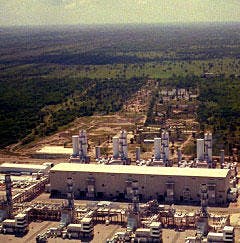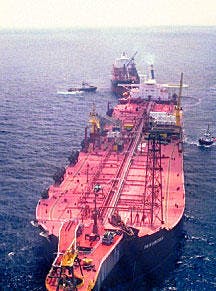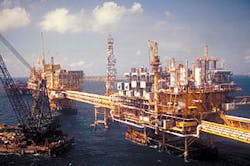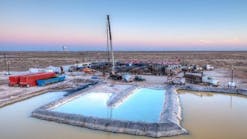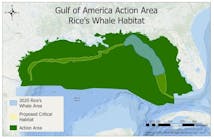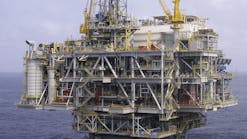What has been described as the world's largest oil field development project currently under way marked further progress in 2001.
Dubbed Proyecto Cantarell, the multibillion-dollar megaproject involves reservoir repressurization, redevelopment, and facilities refurbishment at the massive Cantarell fields complex in the Bay of Campeche off Mexico.
It is designed to boost oil production at Mexico's biggest producing complex to 2.2 million b/d this year from 1 million b/d in 1995 and sustain it near that level for 4 years. Included are upgrades to 39 platforms and installation of 26 new platforms, expansion of gas lift capability and introduction of nitrogen injection, and modernization of safety and control systems (OGJ, Mar. 12, 2001, p. 41; May 14, 2001, p. 15; and Aug. 27, 2001, p. 54).
Operator Petroleos Mexicanos logged a number of milestones at Cantarell as the year drew to a close. Among the major accomplishments, Pemex:
- Achieved record oil production of 1.86 million b/d.
- Closed in on production of the complex's 10 billionth barrel of oil-a milestone almost certain to be passed this year. Remaining reserves are pegged at 14 billion bbl in the complex's four fields. The biggest, Akal, alone is ranked as the world's sixth largest oil field and holds 91% of the complex's estimated 35 billion bbl of OOIP.
- Reduced flaring of associated natural gas to only 10% with the start-up of a third gas compression module. Capacity is now 1.25 bcfd, and flaring was slated to halt by the beginning of this year.
- Completed the first successful year of nitrogen injection of 1.2 bcfd. The nitrogen immiscible injection project has already stemmed Cantarell's production decline and halted further water encroachment that would have killed chances for further recovery of an estimated 2.5 billion boe.
- Recorded 81 million work-hr without a lost time incident.
What's ahead
Continuing Proyecto Cantarell entails mainly drilling infill development wells, finishing debottlenecking efforts, eliminating gas flaring as gas compression capacity reaches 100%, and increasing the number of well workovers in Akal, according to Antonio Acuña R., Cantarell project executive director.
Pemex also hopes to make further progress on delineating the Sihil reservoir, discovered in 1998, which is a fifth productive reservoir underlying Akal field.
Acuña put Sihil's preliminary reserves estimate at 1.135 billion boe.
He noted that the project has already yielded incremental income of almost $11 billion during January 1997-July 2001 resulting from an incremental investment of $5.8 billion.
In the longer term, studies are under way for recovering the injected nitrogen from the produced oil and gas.
In addition, Acuña said studies were to have been completed by yearend 2001 on plans for injecting as much as 300 MMcfd of nitrogen into the nearby KZM (Ku-Maloob-Zaap) fields complex in the Bay of Campeche to yield incremental production of 250,000 b/d.
Acuña anticipated authorization would be forthcoming soon to proceed with the KZM nitrogen injection project this year. The incremental KZM production would be phased in as Cantarell resumes its decline, he said.
The photo shows new gas compression modules installed recently at the Akal C platform complex, which boosted Cantarell gas handling capacity to 1.2 bcfd. The lift of the AC-02 lower deck, at 6,437 tons, represented a record offshore lift for Pemex. Some of the crude oil produced from Cantarell moves to the Ta'Kuntah floating storage and offloading vessel, which started up in September 1998. The FSO was installed at Cayo de Arcas to give Pemex expanded export flexibility in addition to the marine terminal nearshore at Dos Bocas.
